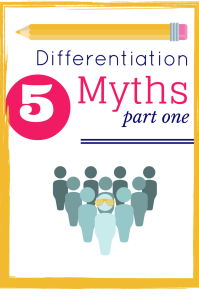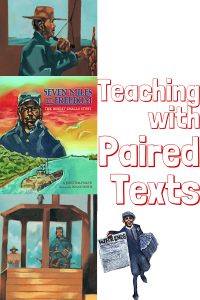In part 1 of this post, I spoke about my experience teaching in a nonverbal autistic classroom and its most meaningful takeaways. Part 2 explores respectful, useful resources for people on the autism spectrum, their family members, and educators.
Tag Archives: Educators
What I Learned From a Nonverbal Autistic Classroom—Part 1
 My final semester as an undergrad was crammed with experiences you might expect of someone full of excitement, optimism, and a lot of what-am-I-going-to-do-with-the-rest-of-my-life thoughts. Aside from the typical pre-graduation nerves, I—as a childhood education major—was about to reach the height of all of the lesson plan and unit plan writing, fieldwork observations, and hours of late-night studying: the student teaching experience.
My final semester as an undergrad was crammed with experiences you might expect of someone full of excitement, optimism, and a lot of what-am-I-going-to-do-with-the-rest-of-my-life thoughts. Aside from the typical pre-graduation nerves, I—as a childhood education major—was about to reach the height of all of the lesson plan and unit plan writing, fieldwork observations, and hours of late-night studying: the student teaching experience.
Protesting Injustice Then and Now
In August we wrote to you about the death of Michael Brown in Ferguson, Missouri. Our publisher said then that the matter of representation was urgent; now, four months later, we see that urgency for what it is: a matter of life or death. Michael Brown’s name now sits alongside new names like Eric Garner, Tamir Rice, and Akai Gurley. How many more names will need to be added before things change?
Choosing the World Our Students Read
![]()
 Emily Chiariello is a Teaching and Learning Specialist with Teaching Tolerance. She has 15 years’ experience as a classroom teacher, professional development and curriculum designer in public, charter and alternative school settings, as well as with non-profit organizations. She holds a master’s degree in philosophy and social policy and is certified in secondary social studies.
Emily Chiariello is a Teaching and Learning Specialist with Teaching Tolerance. She has 15 years’ experience as a classroom teacher, professional development and curriculum designer in public, charter and alternative school settings, as well as with non-profit organizations. She holds a master’s degree in philosophy and social policy and is certified in secondary social studies.
Here she discusses Teaching Tolerance’s new curriculum tool, “Project Appendix D,” that empowers educators to identify texts that both meet the demands of the Common Core Standards and reflect the world in which our students live. This blog post was originally posted at the Teaching Tolerance blog. Continue reading
The Problem with Ethnic Heritage Months
 November is Native American Heritage Month, which is as good a time as any to discuss the slight issue we have with observance months. Native American Heritage Month and Black History Month, for example, were established to celebrate cultures that otherwise went ignored, stereotyped, or otherwise underappreciated. Educators often use these months as a reason to pull titles by/about a particular culture off the shelf to share with students.
November is Native American Heritage Month, which is as good a time as any to discuss the slight issue we have with observance months. Native American Heritage Month and Black History Month, for example, were established to celebrate cultures that otherwise went ignored, stereotyped, or otherwise underappreciated. Educators often use these months as a reason to pull titles by/about a particular culture off the shelf to share with students.
While we can generate a recommended reading list just as well as the next publisher, the problem we find with Native American Heritage Month is that it puts Native American books—and people—in a box. The observance month can easily lead to the bad habit of featuring these books and culture for one month out of the entire year. Ask yourself: Have we ever taken this approach with books that feature white protagonists?
5 Ways to Differentiate Assignments & Tasks: Part 2
Differentiated, or tiered, assignments provide students opportunities for individual understanding and growth in learning. Activities, projects, and tasks that educators create for their students can be used with flexible groups to address common learning needs. Continue reading
Books to Celebrate and Teach about Adoption
National Adoption Day this November 22 and National Adoption Month this November afford a time to share experiences and reflect on families. Whether you have students who have been adopted or are part of a family considering adopting a child into your home, all children can benefit from learning about adoption. Children are very curious about each other’s families, quick to categorize into groups, and intent to define what makes a family, well, a family. Continue reading
5 Harmful Differentiation Myths: Part 1
The learning differences, preferences, and varied backgrounds existent in the classroom present teachers with a challenging task: help every student become a successful learner. How can teachers support all students’ diverse needs? Much confusion and fear have surrounded differentiated instruction and its use in the classroom.
task: help every student become a successful learner. How can teachers support all students’ diverse needs? Much confusion and fear have surrounded differentiated instruction and its use in the classroom.
Myth #1: Differentiation = Individualization
Differentiation doesn’t mean individualizing the curriculum for each student. Yes, when teachers meet one-on-one and conference with students, modifying instruction to best suit the student’s needs, both individualization and differentiation are taking place. However, writing an individual lesson plan for every student in the classroom is NOT differentiating (it’s insanity). Instead, differentiation involves using quality and effective instructional practices to strategically address groups of students based on various levels of learning readiness, interests, and learning styles.
 Myth #2: Every student should be doing something different
Myth #2: Every student should be doing something different
First Look, Second Look, Third Look: Close “Reading” with Book Art
I’ll admit it: I was looking for a Native American book by a Native American author to write about in light of Thanksgiving and National American Indian Heritage Month as many teachers do this time of year. Continue reading
Reading Paired Texts to Increase Student Engagement
In the fall of 2012 a news story emerged that astronomers had discovered a planet largely made out of diamond. Third grade at my school spent the first two quarters studying the solar system; therefore, this news was received with irrepressible glee in my classroom. Although the media nickname “Lucy” was lost on my students (as in the Beatles’ “Lucy in the Sky with Diamonds”), the wonderment and rejuvenated commitment to the content were obvious.
Seeing that scientists were still studying and discovering facts about our solar system and distant others was exciting to my students and made them feel like they were on the frontier learning alongside real astronomers. Pairing the news article with The Magic School Bus: Lost in the Solar System spurred very creative journal entries throughout the unit, including envisioned future discoveries of all sorts of substances for planets: kitten fur, gold, bubbles.
Incorporating current events and news stories into the classroom can engage students with a renewed sense of purpose and interest. Pairing a news article with a book on a similar topic or theme offers students greater context and a sense of relevancy for the content they are learning, and perhaps a jolt to the creeping apathy over a curriculum students had little input in selecting.
 So, what does it look like to use paired texts in the classroom?
So, what does it look like to use paired texts in the classroom?

